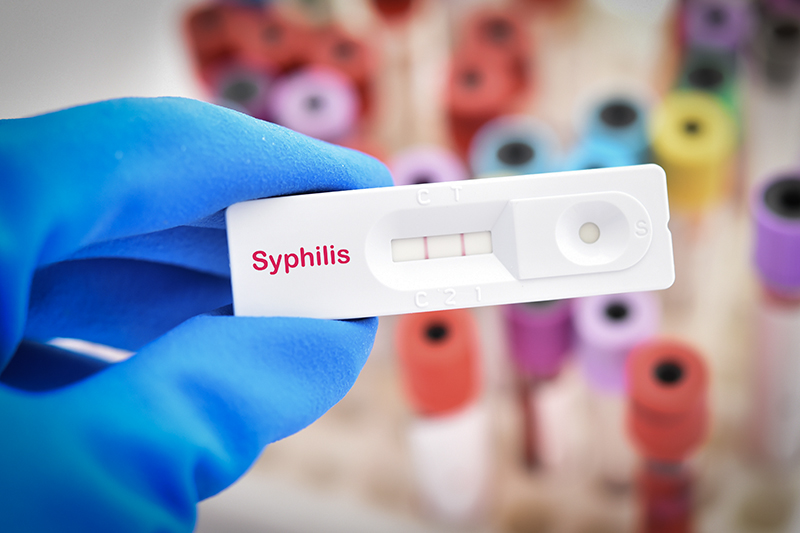Social Risks
Are hookup apps to blame for the rise in HIV and sexually-transmitted infections?

Gene is connected. The 37-year old D.C. resident is on Facebook, Snapchat, GroupMe, Instagram, Grindr, Scruff, and Recon, an app for people into BDSM and other fetishes. Gene and his partner use the latter three to arrange sexual encounters with others — sometimes separately, sometimes together — and enjoy an active sex life. Though HIV-positive, and on medication, making his viral load undetectable, Gene doesn’t always use condoms. Most app users he encounters don’t even bother to ask, while several prefer not to use condoms at all.
“I’ve noticed that if they’re under 25, they usually want a condom,” he says. “When they hit from 25 to 50, they tend to be more into barebacking. When you get above 50, it moves back towards condoms.”
Gene blames the casual attitude towards condoms partly on the increased use of pre-exposure prophylaxis (PrEP), a daily medication that helps prevent HIV transmission. He also says his HIV status, listed on his profile, plays a role, as others who are HIV-positive often seek him out because of his status.
Of course, sex with strangers carries its risks. Besides HIV, Gene has been infected with syphilis twice and once with gonorrhea and herpes. The majority of the time he is a top, yet most of his infections occurred after bottoming.
Gene accepts the risk of sexually-transmitted infections when seeking casual, non-monogamous sex. Yet some state and local health departments are concerned with the number of people recently diagnosed with HIV, syphilis, gonorrhea or chlamydia. In just the last 16 months, health experts from Rhode Island, Pennsylvania, Florida, and Alberta, Canada, have pointed the finger at apps like Grindr, Tinder and Scruff for fueling those increases.
Matthew Rand, a health educator and the Self-Test Project coordinator at Whitman-Walker Health in Washington, D.C., says that while there is evidence showing higher rates of STI infection among social media users, much more research is needed. A 2014 study of over 7,000 men who have sex with men (MSM) by the Los Angeles County Department of Health concluded that the incidence of gonorrhea and chlamydia was higher among people who use social apps to arrange sexual liaisons.
Data from Whitman-Walker’s Gay Men’s Health Clinic, held twice a week, shows a similar trend: Between May 2014 and April 2015, HIV-negative MSM who used social media had higher rates of chlamydia and gonorrhea as opposed to those who did not. Still, there may be other factors contributing to those higher STI rates. Rand points to statistics showing that condom use in general is declining, something he attributes to the perception of HIV as a manageable condition. Dr. Gregory Phillips, a research assistant professor of medical social sciences at Northwestern University’s Feinberg School of Medicine, agrees that the blame for STI increases cannot be attributed solely to hookup apps.
“A lot of the work we’ve done shows that men tend to be less risky with people they meet online, because they don’t really know the people,” says Phillips. “They aren’t meeting them through their social networks, they don’t have a sense of familiarity, so they tend to be more likely to use condoms or not engage with people they don’t know offhand. So it doesn’t seem that that might be the reason for upticks in STDs or HIV.”
Grindr, Scruff and Tinder argue that they are being made the scapegoat for increases in HIV and STIs. “The claim that gay apps like Scruff are the culprit behind increases in reported STIs is neither accurate nor particularly helpful,” Jason Marchant, founding partner and chief product officer of Scruff, said in a statement to Metro Weekly.
“It is probably true that more guys are having more sex because Scruff and other apps have made it easier for GBTQ guys to connect,” he said. “It is also probably true that more guys are having more sex because our hard-earned progress towards equality has, in many places, made it safer for us to be openly LGBTQ. It’s also probably true that more guys are having more sex because our hard-earned victories against HIV are making sex a less fraught and potentially deadly activity. Further, our continued success in making HIV more survivable, manageable, and preventable is likely a primary driver of a related trend: the steady decrease in condom use…. Decreasing condom use and greatly increased HIV/STI testing (of guys on PrEP) are the real, proximal cause behind increases in reported STIs.”
Representatives from Scruff, Grindr, and Tinder also highlighted their companies’ efforts in helping users make better sexual health decisions by providing information on testing and treatment options. Scruff, for instance, allows members to list their safer sex practices on their profile. The app also provides geo-targeted alerts about STI outbreaks and allows nonprofits or public health agencies to advertise their services.
Grindr adopts “a four pronged approach to sexual health,” a representative told Metro Weekly. That includes “ensuring Grindr uses around the world know where and when they can access LGBTQ-competent, anonymous STI testing” and “increasing access to STI prevention tools like PrEP,” as well as helping people make “informed decisions about using protection” and fighting the stigma attached to being HIV-positive.
Tinder has similar efforts to promote sexual health and safety to its users.
“While the CDC, who conducted the largest and most credible study on the topic, has never identified any connection that supports the idea that Tinder usage correlates with, let alone causes, an increase in STDs, we’re happy to do our part in supporting these educational efforts by including Health Safety tips on our site and linking to Healthvana’s free HIV and STD testing site locator,” a spokesperson said.
Joe, a 26-year-old D.C. resident who is on OKCupid, Match, Grindr, Scruff, Tinder and Growlr, credits app developers for their efforts to promote better sexual health practices.
“These apps have been promoting PrEP, and you’ll get advertisements on Grindr to ‘use PrEP’ or ‘be safe,’ things like that,” says Joe. “Yesterday, I got an advertisement on Grindr offering where to get tested. It’s definitely more recent, but they’re making an effort.”
Joe uses condoms “about 75 percent of the time” and gets tested every three months. He’s skeptical about a direct correlation between the use of social media and an increase in STIs.
“I don’t know if there’s necessarily a link between the two,” he says. “If you’re on those apps, you’re looking for a particular thing or are going to be influenced to do a particular thing. I think people that just fuck around in general are at risk — and not just because they’re on an app.”
Charlie is a 27-year-old D.C. resident in an open relationship and has profiles on several hookup websites and apps. He agrees that having a presence on social media isn’t the “silver bullet” that leads to a greater chance of acquiring an STI. Rather, he says, it’s lax attitudes about condom use.
“I won’t lie and say that once I was on PrEP, I didn’t feel a little more comfortable with risky behavior, or a little more at ease hooking up with somebody I met on an app,” he says. “And once you remove the condom from the scenario, it’s going to increase your risk of gonorrhea and chlamydia.”
The names of several of the people interviewed for this article have been changed.
Support Metro Weekly’s Journalism
These are challenging times for news organizations. And yet it’s crucial we stay active and provide vital resources and information to both our local readers and the world. So won’t you please take a moment and consider supporting Metro Weekly with a membership? For as little as $5 a month, you can help ensure Metro Weekly magazine and MetroWeekly.com remain free, viable resources as we provide the best, most diverse, culturally-resonant LGBTQ coverage in both the D.C. region and around the world. Memberships come with exclusive perks and discounts, your own personal digital delivery of each week’s magazine (and an archive), access to our Member's Lounge when it launches this fall, and exclusive members-only items like Metro Weekly Membership Mugs and Tote Bags! Check out all our membership levels here and please join us today!





















